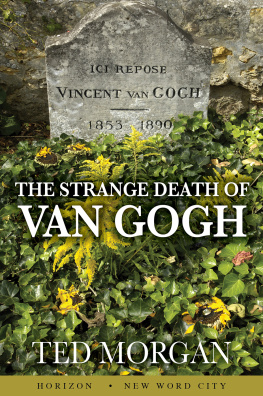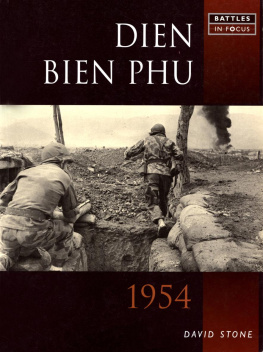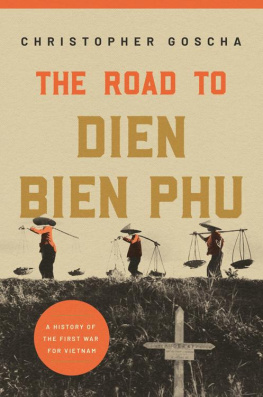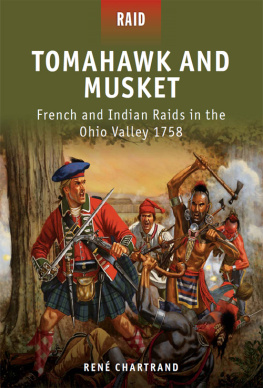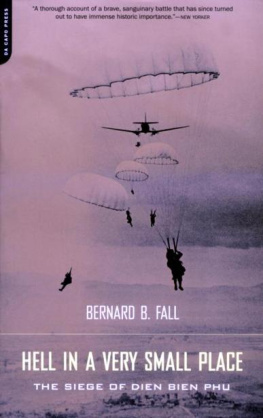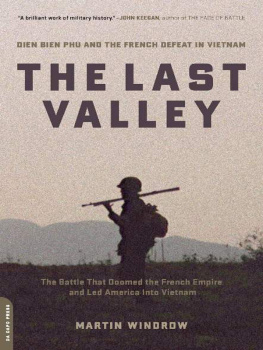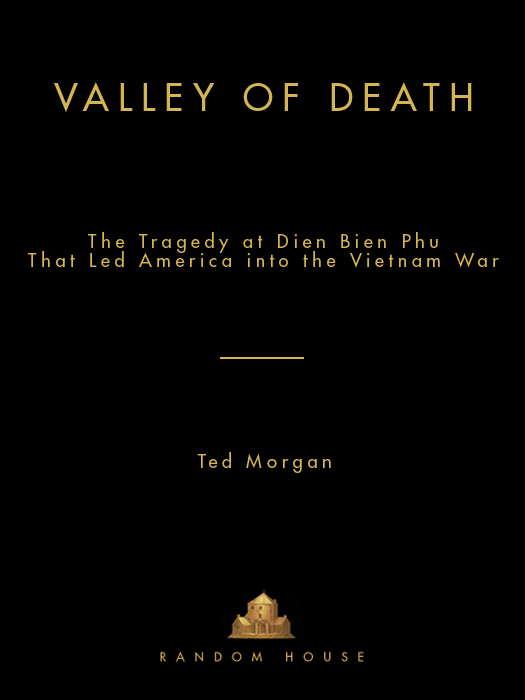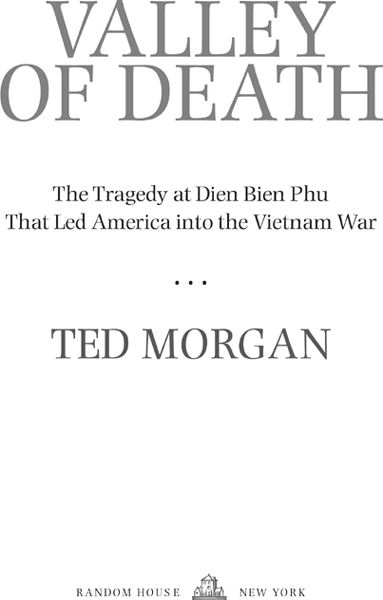Preface
In January 2008, my wife, Eileen, and I took a Vietnam Airlines flight from Hanoi to Dien Bien Phu, the site of the 1954 battle that ended French rule in Indochina. Our two-engine turboprop, made by Arospatiale to land on short runways, was reminiscent of the U.S.built Dakotas that the French had used to supply the base more than half a century ago, so that we had a sense of traveling backward in time as well as forward in space. The 187-mile flight took an hour (as against an hour and a half by the Dakotas), over a thick layer of cumulus clouds, until the altitude dropped to reveal rough-hewn mountains, bare-topped and covered with trails leading to hamlets buried in deep ravines.
Swerving to the right, the plane descended over a long valley of rice paddies as smooth and even as golf greens, surrounded by low mountains on three sides and broken up by clusters of dwellings. The spacious valley seemed anomalous in such a craggy landscape, only twenty miles from the Laotian border. At first sight it was understandable that the French had built an air-ground base there, for if the Vietminh had attacked en masse over the plain, ten miles long and five wide, they would have been massacred.
Our plane landed on what had been the French airstrip, now enlarged and made of concrete instead of perforated steel strips, which some inhabitants had recovered to use as fencing for their gardens. At the unassuming, whitewashed airport, clusters of relatives were waiting for arriving passengers. The twice-daily flights seemed to be something of an event in this isolated outpost, which took sixteen hours to reach by road. A young woman we struck up a conversation with told us she wanted to practice her English because she was studying to be an air traffic controller, which seemed a likely profession in this remote locale, still heavily dependent, as it had been during the battle, on transportation and supply by air.
In 1954, the civilian population of Dien Bien Phu was negligible. Today the town itself has a population of nine thousand, while the valley accommodates six times that number. Rows of women wearing conical straw hats can be seen bent over in the paddies, ankle-deep in water, picking rice shoots by hand as they have for centuries. If there is such a thing as military archaeology, Dien Bien Phu is an example of it, for some of the battle sites have been maintained as memorials, while others were obliterated to make way for housing and planting.
Our decrepit hotel was on May 7 Avenue (the date of the French surrender), a four-lane thoroughfare with a well-lit median, though there is little traffic after dark. The avenue was crowded with open-fronted, narrow shops that spilled out onto the teeming life of the sidewalks, so that the pedestrian had to thread his way past the parked motorbikes, spare tires, cases of soft drinks, piles of burlap bags, people eating on the ground from their rice bowls, and dogs rummaging through rubble. Side by side in their cramped spaces, the stores were like a horizontal but decaying department store, selling hardware, construction materials, furniture, cell phones, jackets of imitation leather, and on one block nothing but wedding dresses. Another block was reserved for barbers, who had set their chairs under shade trees and affixed large mirrors to a grated wall. Once they had placed their scissors and combs on low tables, they were in businessunless it rained. One block was lined with lottery ladies, seated behind folding tables, where the tickets were gathered in neat piles by denomination, or spread out like a fan. They recorded every transaction by hand in their account books.
Farther along the avenue a vast outdoor market unfolded, where Meo tribeswomen came down from the mountains, wearing their black costumes and multicolored cummerbunds, their thick black hair in topknots, to sell products ranging from the mundane to the exoticoranges and tiny apples, indigenous roots, scrawny live turkeys in cages, elixirs in large jars containing snakes and lizards, or filled with dead bees floating in a murky liquid.
History creates its own geological layers, entombing the carnage of warfare under a bustling town. The scenery of battlethe man with a bandaged head being dragged under the arms by two others, the exploding shells forming craters, the staccato crackle of automatic fire drowning out shouts of command, the attacks and counterattacks barely visible through smoke-saturated air, and the knowledge that human life is incidental to both victory and defeatis all submerged, along with the decayed bodies of the fallen. Now the civilian population attends to its daily needs, so that it never occurs to the children playing hopscotch, or to the mothers haggling over the price of an orange, or to the peasants carrying improbable loads at both ends of a bamboo pole balanced on their shoulders, that with every step they are treading on the fallen who have fertilized the soil.
The panoply of normalcy, with its tidy pleasures and habits, its twin concerns of health and wealth, has superseded the determination and spirit of sacrifice of the combatants who fought and died for a cause they believed in: for the Vietminh, independence from colonial rule; for the French, the pride of the career soldiers doing their job well enough to maintain that rule. The men who survived the battle, which lasted fifty-six days and nights, and the captivity that followed defeat lived through a time of such unimaginable suffering, when every day they saw their comrades killed and wounded, their grief mitigated by the adrenaline rush of remaining alive, that everything they returned to seemed pointless and insipid. One of the outstanding paratroop officers who fought there, Major Pierre Tourret, left the army in disgust after Dien Bien Phu, and found it hard to adjust to civilian life. Peace is hell became his catchword, which did not stop him from living into his eighties, preserved in vinegar.
The point of our visit was to study what was left of the French base, in order to form a clearer idea of how this great airborne battle was fought. When the first troops were dropped in on November 20, 1953, the rationale for the base was threefold: to block the advance of Vietminh troops heading toward Laos; to draw their troops away from the Tonkin (or Red River) Delta, where they seemed to be preparing an offensive; and by providing the base with artillery, tanks, and fighter-bombers, to draw the Vietminh into attacking where they were likely to suffer severe losses.
Eight centers of resistance (CRs) were built in the entrenched camp, all with womens names, on both sides of the Nam Yum River, which provided drinking water. The river was spanned by a Bailey bridge that is still in use. The airstrip was close by, as were the pits for the 155mm cannon and the tanks. By December 17, the base was operational.
Our guide to what remained of the base was Nguyen Tien Manh (known as Mike), a slight but athletic forty-one-year-old native of Dien Bien Phu. Round-eyed with a pencil mustache and an easy smile that revealed gaps in his teeth, he was familiar with the bases layout, for his uncle had fought at Dien Bien Phu and had told him that Vietminh losses were far greater than those admitted to. Mike had learned his English during four years in the Vietnamese army, but since his teacher was a fellow soldier, I found his accent hard to decipher, though Eileen did much better. Mike recruited a four-wheel-drive Toyota and a driver to reach the strong-points, on many of which only a marker remained. We explored them over a period of four days, starting with Eliane 2. Preserved as a memorial, it was not the highest, but it was the most massive and elaborate, looming like a mastodon over the center of town, behind May 7 Avenue. It was three-sided, with two steep sides and one gentle slope known as the Champs-Elyses, where Vietminh assaults had been mowed down by French machine guns. In some places, the four rows of barbed wire that had surrounded it were preserved, which reminded me of James Dickeys comment: All that is needed to understand World War I in its philosophical and historical meaning is to examine the barbed wirea single strand will doand to meditate on who made it, what it is for, why it is like it is. The similarities between World War I and Dien Bien Phu were obvious: trench warfare and barbed wire.



